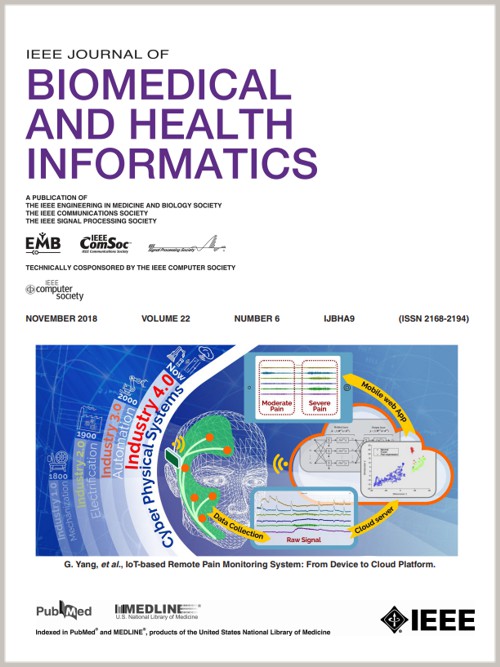GMAEEG:用于脑电图表征学习的自监督图屏蔽自动编码器。
IF 6.7
2区 医学
Q1 COMPUTER SCIENCE, INFORMATION SYSTEMS
IEEE Journal of Biomedical and Health Informatics
Pub Date : 2024-08-15
DOI:10.1109/JBHI.2024.3443651
引用次数: 0
摘要
注释脑电图(EEG)数据是人工智能驱动的脑电图自动分析的先决条件。然而,由于注释数据的高成本和由此导致的训练不足,注释数据的稀缺限制了脑电图自动分析的发展。以遮蔽式自动编码器为代表的生成式自监督学习具有潜力,但在处理非欧几里得结构时会遇到困难。为了缓解这些挑战,本研究提出了一种用于脑电图表征学习的自监督图掩码自动编码器,命名为 GMAEEG。具体来说,通过一个掩码信号重建借口任务,用时间和空间表征来丰富预训练模型。利用先验知识初始化的可学习动态邻接矩阵可适应大脑特征。下游任务通过微调预训练参数来完成,邻接矩阵根据任务功能相似性进行转移。实验结果表明,以情绪识别为前置任务,GMAEEG 在各种下游任务中都能取得优异的表现,包括情绪、重度抑郁障碍、帕金森病和疼痛识别。考虑到 EEG 的非欧几里得特性,本研究首次为 EEG 表征学习量身定制了遮蔽式自动编码器。此外,基于 GMAEEG 的图连接分析可能会为未来的临床研究提供启示。本文章由计算机程序翻译,如有差异,请以英文原文为准。
GMAEEG: A Self-Supervised Graph Masked Autoencoder for EEG Representation Learning
Annotated electroencephalogram (EEG) data is the prerequisite for artificial intelligence-driven EEG autoanalysis. However, the scarcity of annotated data due to its high-cost and the resulted insufficient training limits the development of EEG autoanalysis. Generative self-supervised learning, represented by masked autoencoder, offers potential but struggles with non-Euclidean structures. To alleviate these challenges, this work proposes a self-supervised graph masked autoencoder for EEG representation learning, named GMAEEG. Concretely, a pretrained model is enriched with temporal and spatial representations through a masked signal reconstruction pretext task. A learnable dynamic adjacency matrix, initialized with prior knowledge, adapts to brain characteristics. Downstream tasks are achieved by finetuning pretrained parameters, with the adjacency matrix transferred based on task functional similarity. Experimental results demonstrate that with emotion recognition as the pretext task, GMAEEG reaches superior performance on various downstream tasks, including emotion, major depressive disorder, Parkinson's disease, and pain recognition. This study is the first to tailor the masked autoencoder specifically for EEG representation learning considering its non-Euclidean characteristics. Further, graph connection analysis based on GMAEEG may provide insights for future clinical studies.
求助全文
通过发布文献求助,成功后即可免费获取论文全文。
去求助
来源期刊

IEEE Journal of Biomedical and Health Informatics
COMPUTER SCIENCE, INFORMATION SYSTEMS-COMPUTER SCIENCE, INTERDISCIPLINARY APPLICATIONS
CiteScore
13.60
自引率
6.50%
发文量
1151
期刊介绍:
IEEE Journal of Biomedical and Health Informatics publishes original papers presenting recent advances where information and communication technologies intersect with health, healthcare, life sciences, and biomedicine. Topics include acquisition, transmission, storage, retrieval, management, and analysis of biomedical and health information. The journal covers applications of information technologies in healthcare, patient monitoring, preventive care, early disease diagnosis, therapy discovery, and personalized treatment protocols. It explores electronic medical and health records, clinical information systems, decision support systems, medical and biological imaging informatics, wearable systems, body area/sensor networks, and more. Integration-related topics like interoperability, evidence-based medicine, and secure patient data are also addressed.
 求助内容:
求助内容: 应助结果提醒方式:
应助结果提醒方式:


